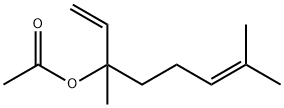A6681812
Phenyl acetate , 98% , 122-79-2
Synonym(s):
Acetic acid phenyl ester
CAS NO.:122-79-2
Empirical Formula: C8H8O2
Molecular Weight: 136.15
MDL number: MFCD00008699
EINECS: 204-575-0
| Pack Size | Price | Stock | Quantity |
| 25G | RMB39.20 | In Stock |
|
| 100G | RMB48.80 | In Stock |
|
| 500G | RMB150.40 | In Stock |
|
| 2.5kg | RMB635.20 | In Stock |
|
| others | Enquire |
Update time: 2022-07-08
PRODUCT Properties
| Melting point: | 195-196℃ |
| Boiling point: | 196 °C(lit.) |
| Density | 1.073 g/mL at 25 °C(lit.) |
| vapor density | 4.7 |
| FEMA | 3958 | PHENYL ACETATE |
| refractive index | n |
| Flash point: | 170 °F |
| storage temp. | Store below +30°C. |
| solubility | 4g/l practically insoluble |
| form | Liquid |
| color | Clear colorless to slightly brown |
| Odor | at 10.00 % in dipropylene glycol. phenolic medicinal animal resinous castoreum woody smoky burnt |
| Odor Type | phenolic |
| Water Solubility | Soluble in water (4 g/L at 20°C). |
| Merck | 14,7267 |
| JECFA Number | 734 |
| BRN | 636458 |
| Dielectric constant | 6.9(20℃) |
| Stability: | Stable. Incompatible with strong acids, strong bases, strong reducing agents, strong oxidizing agents. Combustible. |
| LogP | 1.65 |
| CAS DataBase Reference | 122-79-2(CAS DataBase Reference) |
| EPA Substance Registry System | Acetic acid, phenyl ester (122-79-2) |
Description and Uses
Phenyl acetate levels in urine are marker for the diagnosis of some forms of unipolar major depressive disorders. It undergoes Fries rearrangement to form a mixture of o- and p-hydroxyacetophenones which are useful intermediates in manufacture of pharmaceuticals. It is a metabolite of Phenylbutyrate (PB), useful in the treatment of neuroblastoma and lung cancer.
Safety
| Symbol(GHS) |  GHS07 |
| Signal word | Warning |
| Hazard statements | H227-H302 |
| Precautionary statements | P210e-P280a-P301+P312a-P501a-P210-P264-P270-P280-P301+P312+P330-P370+P378-P403+P235-P501 |
| Hazard Codes | Xn,Xi |
| Risk Statements | 22 |
| Safety Statements | 36 |
| RIDADR | NA 1993 / PGIII |
| WGK Germany | 2 |
| RTECS | AJ2800000 |
| Hazard Note | Irritant |
| TSCA | Yes |
| HS Code | 29153900 |
| Hazardous Substances Data | 122-79-2(Hazardous Substances Data) |
| Toxicity | LD50 orally in rats: 1.63 ml/kg, H. F. Smyth et al., Am. Ind. Hyg. Assoc. J. 30, 470 (1969) |




